Table of Contents
Ever watch your indoor cat stalk a dust bunny like it's a lion hunting a gazelle? Domestic cats retain strong hunting instincts, and if those instincts aren't satisfied, boredom, behavioral issues, and even health problems can arise. That's where predatory play comes in. Providing your feline friend with toys that mimic the thrill of the hunt is crucial for their physical and mental well-being. But with so many options available, how do you choose the best cat toys for hunting?
Cat Feather Wands: Mimic the Thrill of the Hunt
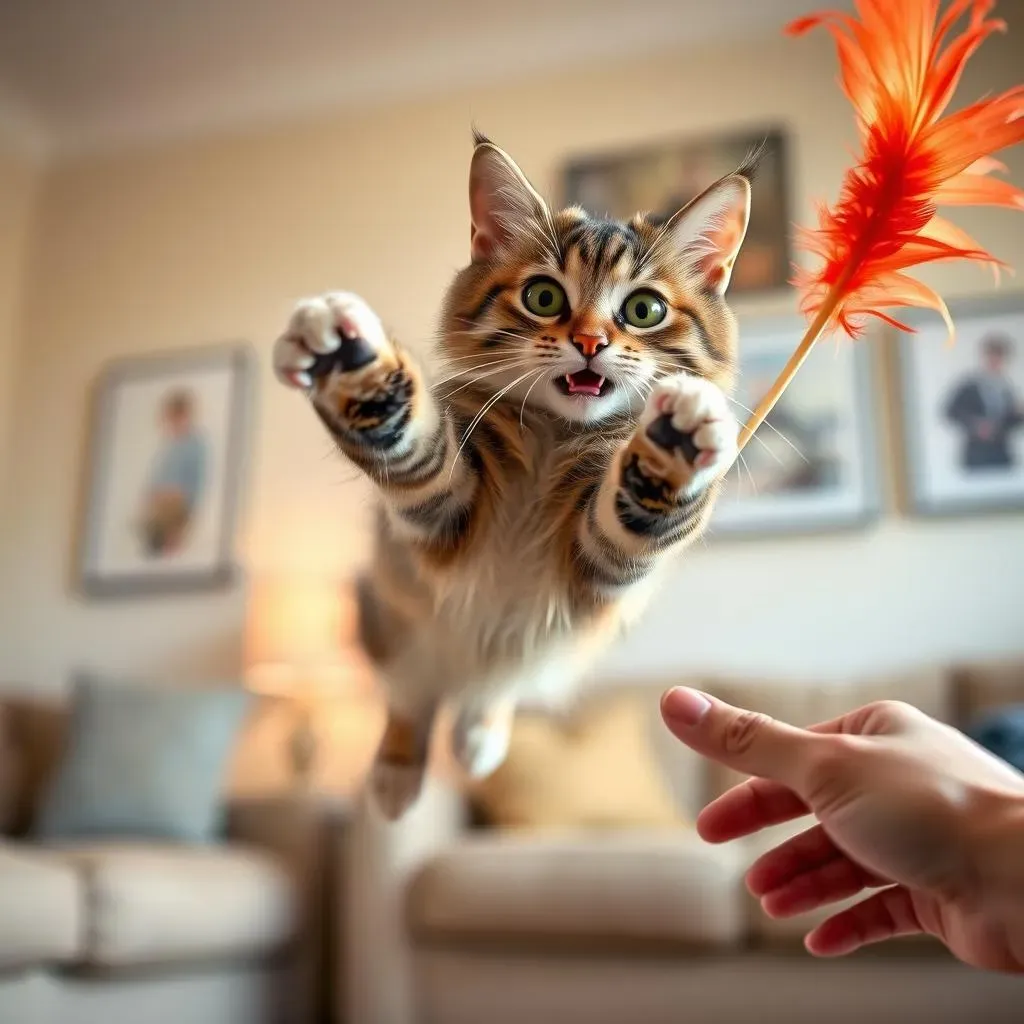
Cat Feather Wands: Mimic the Thrill of the Hunt
let's talk feather wands – seriously, these things are cat crack! If you want to see your feline friend transform into a tiny, ferocious predator, a feather wand is your weapon of choice. The erratic, bird-like movements you can create with a wand perfectly mimic the thrill of the hunt. It's like bringing the Discovery Channel right into your living room, except you're the director and your cat is the star.
What's so great about feather wands is their versatility. You can adjust your play style to suit your cat's individual preferences. Does your cat like a fast-paced chase? Whip that feather around like a hummingbird on caffeine! Does your cat prefer a more stealthy approach? Slowly drag the feather across the floor, letting them stalk and pounce like a seasoned hunter. Seriously, it is amazing. It's all about knowing your audience.
And it's not just about the feathers, either. Some wands have bells, crinkly material, or even different types of "prey" attached – like little mice or bugs. Experiment to see what gets your cat's motor running. Trust me, once you find the right combination, you'll have a hunting machine on your hands (or rather, paws).
However, do not just take my word for it, you can see what other people say about it. My friend said that "I've had cats who were obsessed with feather wands, and others who couldn't care less. It really depends on the cat's personality and play style." So, if you're new to the feather wand game, don't be discouraged if your cat doesn't immediately go wild. Keep experimenting, and you'll eventually unlock their inner hunter.
FoodDispensing Cat Treat Toys: Satisfy Hunger and Hunting Instincts
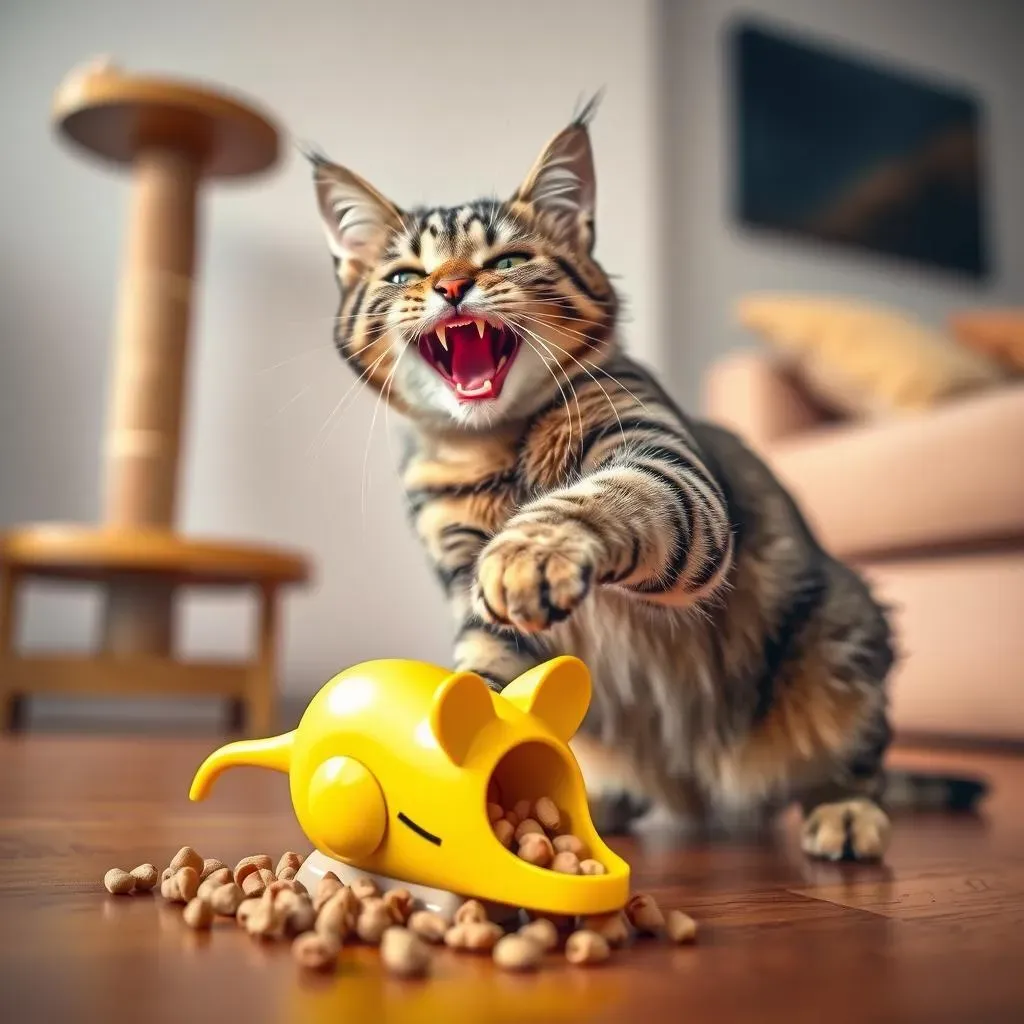
FoodDispensing Cat Treat Toys: Satisfy Hunger and Hunting Instincts
The Dopamine Delivery System
so picture this: your cat's home alone, maybe a little bored, maybe plotting your demise (just kidding... mostly). Enter the food-dispensing cat treat toy! These ingenious devices combine the thrill of the hunt with the satisfaction of a tasty reward. It's like hitting the jackpot every time they manage to dislodge a kibble or treat.
Why does this work so well? It's all about dopamine, that feel-good neurotransmitter. When your cat successfully "hunts" for food, their brain gets a little hit of dopamine, reinforcing the behavior and making them want to play again and again. It's a brilliant way to keep them entertained and prevent boredom, especially when you're not around to provide direct interaction. Plus, it slows down their eating, which can be a lifesaver for those cats who tend to inhale their food and then immediately regret their life choices.
Choosing the Right Feeder
Now, not all food-dispensing toys are created equal. You've got balls with holes, puzzle feeders, and even electronic contraptions that dispense food at set intervals. The key is to find one that challenges your cat without frustrating them to the point of giving up. Start with something relatively easy and gradually increase the difficulty as they get the hang of it.
Consider your cat's personality and physical abilities. A senior cat with arthritis might not appreciate a toy that requires a lot of batting and chasing. A highly intelligent cat might breeze through a simple puzzle feeder in minutes. Observe your cat's behavior and adjust accordingly. And, of course, make sure the toy is made of safe, durable materials that can withstand some serious feline abuse.
Toy Type | Difficulty Level | Best For |
|---|---|---|
Ball with Holes | Easy | Beginners, cats who like to chase |
Puzzle Feeder | Medium to Hard | Intelligent cats, cats who need a challenge |
Electronic Feeder | Variable | Cats who need scheduled feeding, owners who want to control portions |
Puzzle Toys: Challenge Your Cat's Predatory Skills
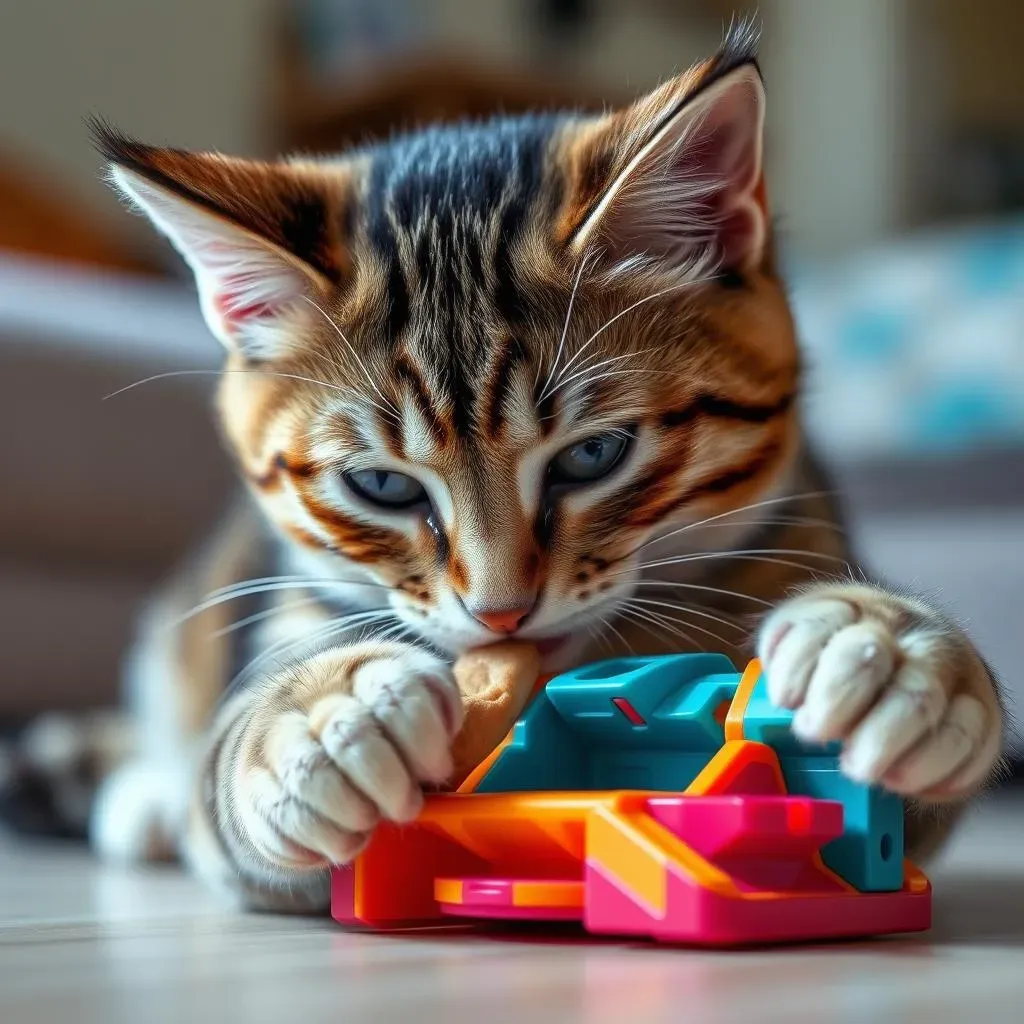
Puzzle Toys: Challenge Your Cat's Predatory Skills
Brain Games for Felines
picture this: you've got a cat who's clearly smarter than half the people you know. They've mastered the art of opening doors, figuring out how to raid the treat jar, and generally outsmarting you at every turn. What do you do? You challenge them with puzzle toys, of course! These aren't your average, run-of-the-mill cat toys. They're designed to engage your cat's problem-solving skills, mimicking the mental effort required to hunt and capture prey in the wild.
Puzzle toys tap into a cat's natural curiosity and desire to manipulate objects. They have to figure out how to slide, push, or rotate different parts of the toy to reveal a hidden treat or toy. It's like giving them a mini-quest every time they play, which is way more stimulating than just batting around a boring old ball of yarn. Plus, it keeps them occupied for longer periods, which is a major win for busy pet parents.
Matching the Puzzle to the Personality
The key to success with puzzle toys is finding one that matches your cat's personality and skill level. Some cats are naturally more persistent and analytical, while others prefer a more hands-on approach. Start with a simple puzzle that they can solve relatively easily, and gradually increase the difficulty as they gain confidence. You don't want to frustrate them to the point of giving up, but you also don't want them to solve it in two seconds flat.
There's a huge variety of puzzle toys available, from simple treat mazes to complex contraptions with multiple steps. Some require your cat to slide panels, while others involve rotating discs or lifting cups. Observe your cat's play style and see what types of puzzles they seem to enjoy the most. Do they like to use their paws, their nose, or a combination of both? The more you understand their preferences, the better you can choose puzzles that will keep them engaged and entertained.
Puzzle Type | Challenge Level | Skills Required |
|---|---|---|
Treat Maze | Easy to Medium | Pawing, pushing |
Sliding Panels | Medium | Pawing, problem-solving |
Rotating Discs | Medium to Hard | Pawing, coordination |
Hidden Compartments | Hard | Pawing, lifting, problem-solving |
Beyond the Treat: The Joy of the Hunt
While puzzle toys are often used with treats, they can also be used with small toys or even just pieces of kibble. The point is to provide your cat with a sense of accomplishment and satisfaction. When they finally figure out how to solve the puzzle and retrieve the reward, they get a little hit of dopamine that reinforces the behavior. It's like they've successfully "hunted" their prey, even though all they really did was push a few panels around.
And that's the beauty of puzzle toys: they tap into a cat's natural hunting instincts without requiring them to actually go out and catch anything. It's a safe, stimulating, and enriching way to keep your cat entertained and prevent boredom, especially when you're not around to play with them directly. So, if you're looking for a way to challenge your cat's mind and satisfy their predatory urges, give puzzle toys a try. You might be surprised at how much they enjoy them (and how smart they really are!).
Toy Mice: The Best Cat Toys for the Perfect "Kill"
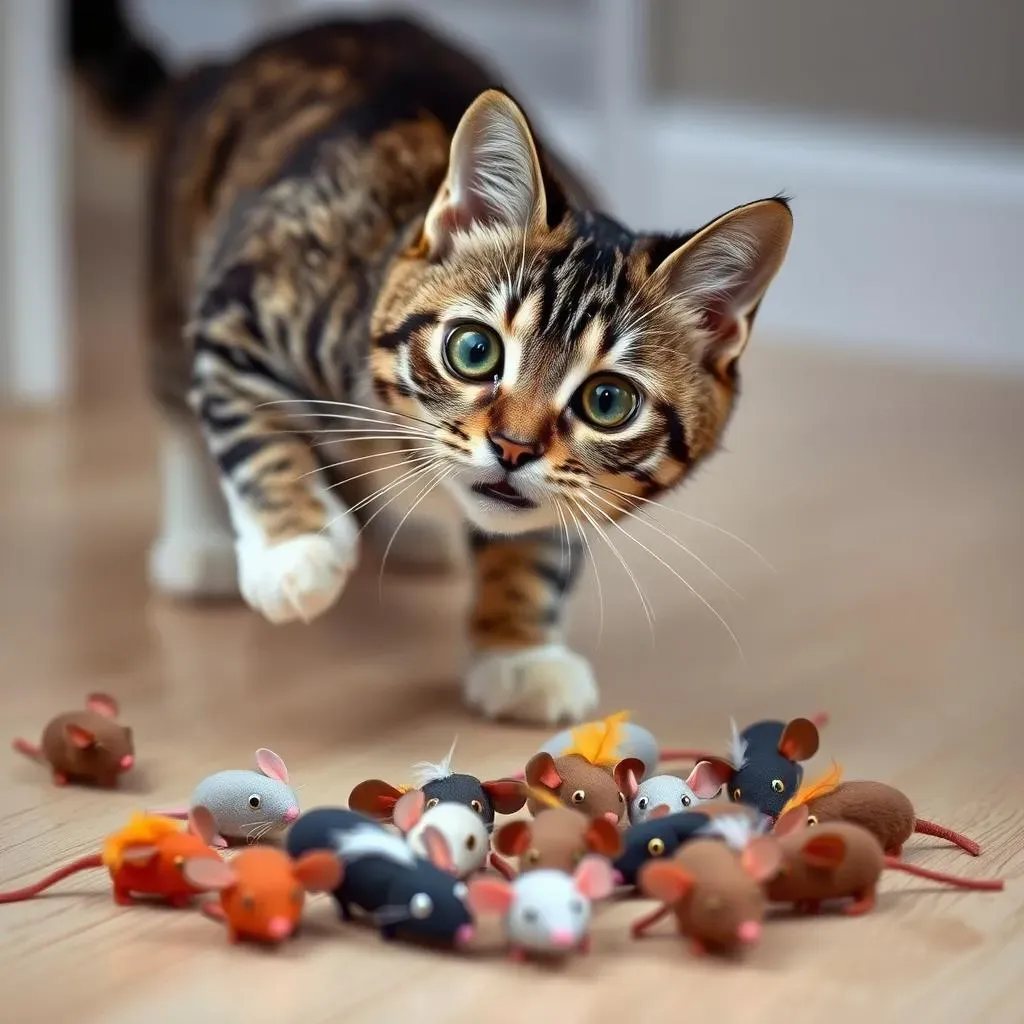
Toy Mice: The Best Cat Toys for the Perfect "Kill"
Alright, let's get real about toy mice. These aren't just cute little plushies; they're symbolic representations of the ultimate hunting prize for your cat. Think about it – what's the point of all that stalking, chasing, and pouncing if there's no satisfying "kill" at the end? Toy mice provide that crucial element, allowing your cat to fully express their predatory instincts and experience the thrill of victory (even if it's just over a tiny, inanimate object).
The beauty of toy mice lies in their simplicity and variety. You can find them in all shapes, sizes, and materials, from classic felt mice filled with catnip to realistic-looking plush mice with rattling tails. Some even have feathers or crinkly material to add extra sensory stimulation. The key is to experiment and see what your cat prefers. Do they like a small, lightweight mouse they can easily toss around? Or a larger, more substantial mouse they can really sink their teeth into? The possibilities are endless!
And it's not just about the physical characteristics of the mouse, either. The way you present it to your cat can also make a big difference. Try hiding the mouse under a blanket or behind a piece of furniture, then let your cat "discover" it. Or, drag the mouse across the floor on a string, mimicking the movements of a real rodent. The more realistic you can make the hunting experience, the more engaged your cat will be.
However, do not just give one toy mouse for your cat, you can also provide multiple toy mice for them. It is a good habit to keep your cat playful and happy. If your cat is bored, you can replace the old toy mice with the new one that would make them more excited. So, embrace the power of the toy mouse and watch your cat transform into a skilled and satisfied hunter!
Mouse Type | Material | Features |
|---|---|---|
Classic Felt Mouse | Felt, catnip | Simple, affordable, classic |
Plush Mouse | Plush fabric, stuffing | Realistic, cuddly, durable |
Rattle Mouse | Plush fabric, rattle | Auditory stimulation, engaging |
Feather Mouse | Plush fabric, feathers | Visual and tactile stimulation |
Laser Toys: Exercise, Mental Stimulation, and the Importance of a Real Reward
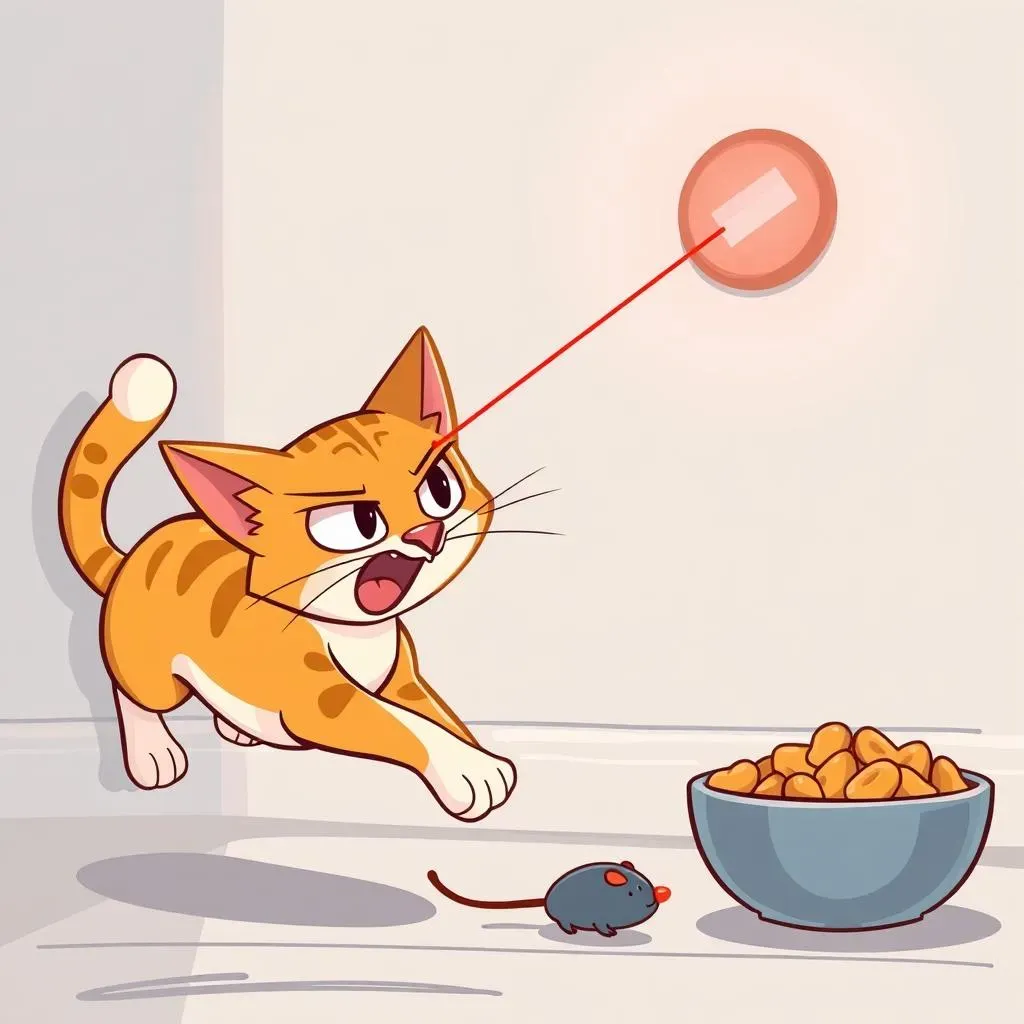
Laser Toys: Exercise, Mental Stimulation, and the Importance of a Real Reward
The Allure of the Red Dot
let's talk laser pointers. These little devices are like catnip in laser form – instantly captivating and endlessly entertaining. The allure of the elusive red dot is undeniable. Cats can't resist the urge to chase, pounce, and stalk this seemingly unattainable prey. It's a fantastic way to get them moving, providing much-needed exercise, especially for indoor cats who might not have many opportunities to run and jump.
But it's not just about the physical activity. Laser pointers also provide mental stimulation. Cats have to use their problem-solving skills to anticipate the dot's movements and strategize their attacks. It's like a high-speed game of cat and mouse (or rather, cat and dot), keeping their minds sharp and engaged. Plus, let's be honest, it's just plain fun to watch them go wild!
The Frustration Factor: Why the Hunt Needs a "Kill"
Now, here's the catch with laser pointers: they can be frustrating for some cats. Think about it – they're chasing something they can never actually catch. It's like being stuck in a perpetual state of "almost," which can lead to anxiety and obsessive behavior in some felines. That's why it's crucial to always end a laser pointer play session with a "kill."
What does that mean? Simple: at the end of the game, redirect the laser pointer onto a physical toy, like a toy mouse or a ball. Let your cat "catch" and "kill" the toy, satisfying their hunting instincts and providing a sense of closure. This helps them feel like they've actually accomplished something, preventing frustration and promoting a healthy play experience. It's like giving them a gold medal after a grueling race – they deserve it!
Responsible Laser Pointer Play: Safety First
Before you unleash the red dot, it's important to consider safety. Never shine the laser pointer directly into your cat's eyes (or anyone else's, for that matter). This can cause serious damage. Also, be mindful of your surroundings. Avoid pointing the laser near breakable objects or areas where your cat could get injured. The goal is to provide exercise and stimulation, not a trip to the vet.
Also, make sure the laser pointer you're using is specifically designed for pets. These lasers are typically lower in power and less likely to cause eye damage. And, as always, supervise your cat during playtime. You want to make sure they're having fun and staying safe. With a little caution and a lot of enthusiasm, laser pointers can be a valuable tool in your cat-enrichment arsenal. Just remember to end with a real reward – your cat will thank you for it!
Do | Don't |
|---|---|
Use a low-power laser pointer | Shine the laser in your cat's eyes |
End the session with a physical "kill" | Play for excessive amounts of time |
Supervise your cat during playtime | Point the laser near hazards |
Embrace the Hunt: Providing the Best Cat Toys for a Happy Feline
Ultimately, understanding and embracing your cat's natural hunting instincts is key to their happiness and well-being. By providing a variety of toys that allow them to stalk, chase, pounce, and "bite," you're not just entertaining them; you're fulfilling a deep-seated need. Experiment with different types of toys to discover your cat's preferences and create a stimulating environment that keeps them mentally and physically engaged. Remember, a happy hunter is a happy housecat!